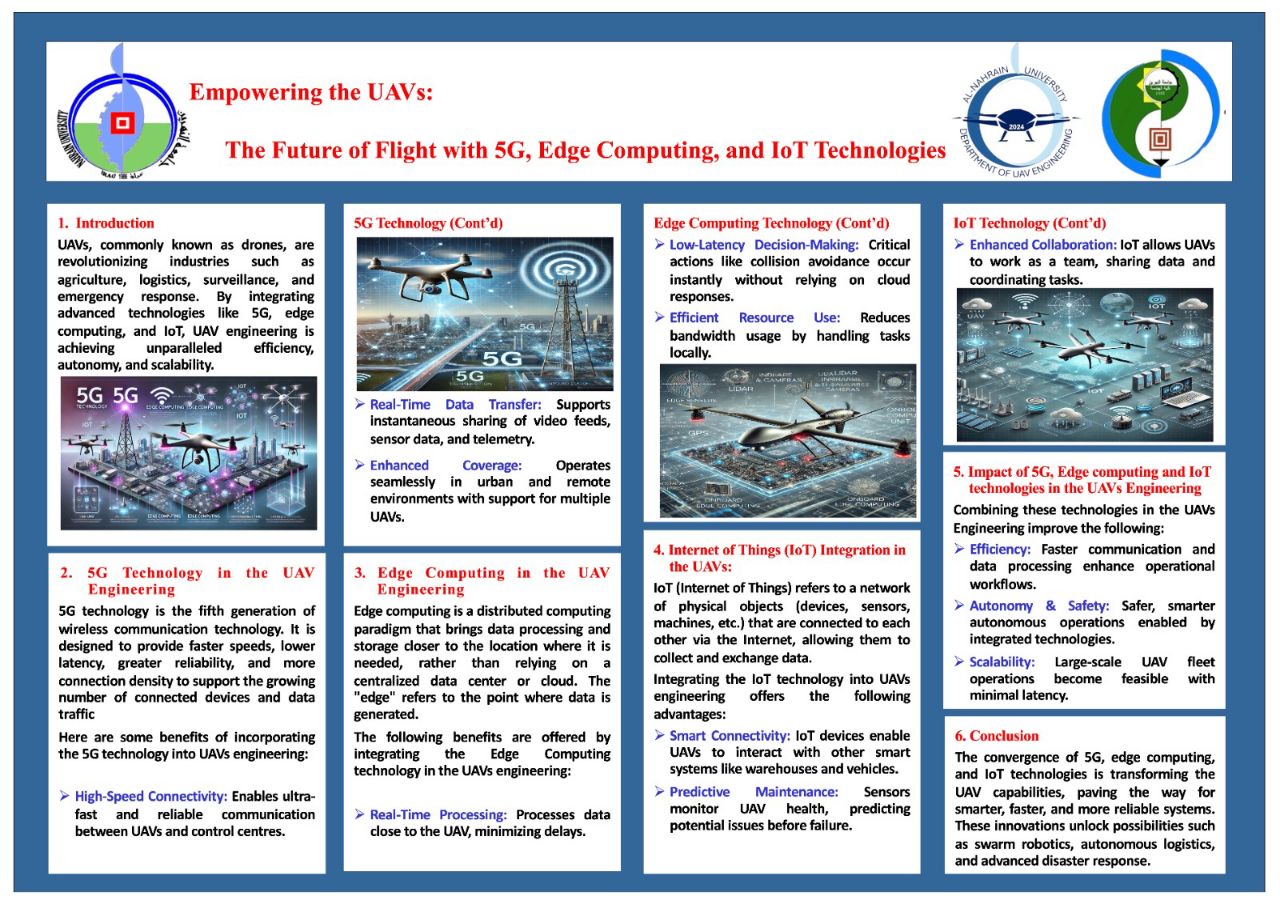Visitors: 28549590 Views
Done By: Unmanned Aerial Vehicle
Post Date: 2025-03-19
Last Browse: 2025-09-14

As part of the
scientific and cultural activities of the Unmanned Aircraft Engineering
Department at the College of Engineering, Al-Nahrain University, for the academic year 2024/2025,
first-year students (Yasser Ali Ismail Mohammed) and (Haroun Mohammed Rashid
Nassif) conducted an extracurricular activity involving the preparation of a
poster, titled: "Empowering
Unmanned Aerial Vehicles: The Future of Aviation through 5G, Edge Computing,
and the Internet of Things" This poster
highlights the importance of integrating modern communication technologies in
UAV development. The activity was conducted under the supervision of Dr.
Ahmed Juma Lafta (specialist in the Communications and Networks
Engineering) from the Unmanned Aircraft Engineering Department and Mrs. Aya
Falah Mahmoud (specialist in the Electronics and Communications Engineering)
from the Prosthetics and Orthotics Engineering Department. In their
presentation, the students explored the modern communication technologies,
specifically 5G wireless networks, edge computing, and the Internet of Things
(IoT), and their role in enhancing the performance and efficiency of unmanned
aerial vehicles (UAVs). These advanced technologies contribute to UAV
performance enhancement in the following ways: 1. 5G
Wireless Networks: This technology ensures high-speed and reliable
communication between UAVs and ground control stations, enabling real-time data
transmission with minimal latency. Additionally, it enhances the UAV coverage
in both urban and remote areas. 2. Edge
Computing: Edge computing enables rapid data processing and storage closer to
the UAV, reducing reliance on centralized data centers or cloud computing for
processing. This technology optimizes bandwidth efficiency and allows for
real-time decision-making, such as collision avoidance and autonomous mission
execution with minimal delay.
3. Internet
of Things (IoT): IoT technology facilitates seamless interconnectivity between
multiple devices through the internet, improving data collection and exchange.
Integrating the IoT with UAVs enhances coordination and synchronized task
execution, enabling UAVs to function as a cohesive team. Additionally, the
IoT-based sensor monitoring helps predict potential failures, allowing for proactive
maintenance and improving operational reliability.